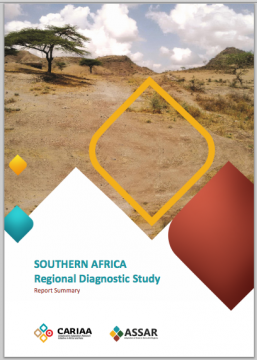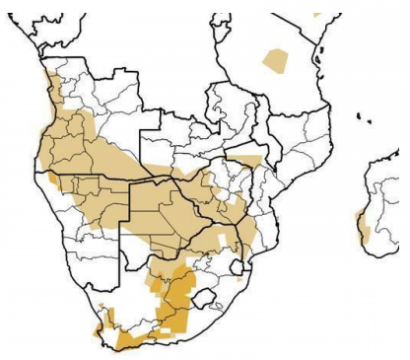Vulnerability and Adaptation to Climate Change in the Semi-Arid Regions of Southern Africa: ASSAR Regional Diagnostic Study


Home to hundreds of millions of people, the semi-arid regions of Africa and Asia are particularly vulnerable to climate-related impacts and risks. Working in 11 countries in these regions, ASSAR is a research project that seeks to understand the factors that have prevented climate change adaptation from being more widespread and successful. This article features ASSAR’s work in Southern Africa. To read about the project in other regions please see their respective articles.
East Africa West Africa South Asia
Introduction
The semi-arid areas of southern Africa are culturally and ecologically diverse characterised by a high proportion of poor people with limited access to services, high unemployment levels, high levels of inequality, and high levels of HIV and AIDS. In addition to agriculture, the people living in these areas are reliant on a variety of natural resources, employment and remittances for their livelihoods due to the relatively low agricultural productivity of land.
Climate change, trends and projections Semi-arid areas in southern Africa are characterised by seasonal and highly variable rainfall (inter-annually and intra-seasonally), frequent droughts and flash floods. Temperatures are predicted to increase in semi-arid areas in southern Africa by between 1 and 4 degrees Celsius by 2050 and substantial multi-decadal variability in rainfall is predicted to continue into the future, without certainty in the direction of change in rainfall in any area.

Semi-Arid regions of Southern Africa, with primary administrative boundaries.
Adaptation context
Numerous coping and adaptation interventions have been implemented and suggested for semi-arid areas in Southern Africa. The main coping mechanisms include relying on social networks for assistance, reducing the size of livestock herds and supplementing livestock with food and water. Adaptation interventions include those related to forecasting, storage of food, water efficiency, water management and water harvesting, environmental improvement interventions such as soil and water conservation, tree planting, wind breaks and conservation agriculture, and the diversification of livelihoods, crops and livestock, spatial and temporal changes e.g. moving livestock, changing planting dates of crops and accessing other land and water. At the national level, adaptation plans and processes are occurring to different degrees across the region. The issue is on the national agenda but not a high priority for most governments.
Barriers to adaptation There are a number of barriers to adaptation that have been reported in the literature. These include a number of governance related issues including a lack of coordination, technical capacity and availability of resources. At the local level factors such as a lack of access to information, natural and financial resources, technical know-how and incentives play a role
Key messages from report
Some of the key insights that emerge from the RDS report include:
- Current adaptation actions are not sufficient and there are many measures that could be applied that are not being applied or are only being applied in localised areas;
- Based on climate projections, adaptation measures and livelihoods that are currently relied on may no longer be viable into the future;
- Information on adaptation options needs to be made more readily available to practitioners;
- Alternative livelihood options need to be created at the local level and this requires policies that enable and promote new and diverse livelihood options e.g. increasing markets;
- More integration and a common goal is needed across different sectors in their policy and practice to work towards achieving the implementation of widespread and effective adaptation;
- An evidence base as well as demonstrations of the benefits of adaptation to communities is required especially in relation to the costs to convince policy makers, practitioners and communities; and
- In addition to the point above, there is a need for an approach to measure adaptation.
Way forward
The Regional Research Programme (RRP) of ASSAR will build on the findings of the RDS report and provide an evidence base towards addressing some of the gaps identified. For example, further analysis will be conducted on measuring the effectiveness of adaptation projects and a more in depth study will be conducted on barriers to widespread and sustained adaptation. Expected outputs from the RRP include information on which adaptation measures are appropriate and effective in semi-arid regions in Southern Africa. During the RRP there will also be a line of research looking at expected future climate conditions and the implications for adaptation responses
Presentation
Vulnerability and Adaptation to Climate Change in the Semi-Arid Regions of Southern Africa. From SlideShare-
Click to read a summary of the Southern Africa Regional Diagnostic Study
- ASSAR on University of Cape Town’s website.
(0) Comments
There is no content